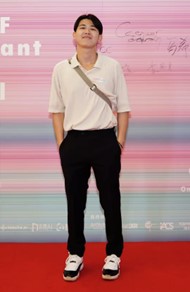Yingjie Song
What is your current job? 
I am currently working as a Research Fellow in the School of Engineering at the University of Warwick.
What A-Levels (or equivalent) did you do?
I completed my high school education in China and my main subjects were chemistry, mathematics, physics, and biology. This strong science background helped me develop a solid understanding of fundamental principles and sparked my early interest in chemical processes and materials, eventually leading me to pursue chemical engineering and research in materials science.
Why did you chose a career in Materials Science and Engineering (MSE)?
I have always been fascinated by how materials can be engineered at the atomic and molecular level to solve practical problems, especially in energy and sustainability. MSE offers the perfect combination of chemistry, physics, and engineering to create impactful technologies like catalysts, membranes, and devices for clean energy production.
What did you enjoy most about your MSE course? (If you didn’t do a MSE course which course did you do and what led to you MSE?)
Although I studied Chemical Engineering, my research naturally led me into the field of Materials Science. I enjoy the process of synthesizing novel materials and understanding their atomic structure for their further application in clean energy conversion. This combination of hands-on lab work and problem solving has always kept me excited.
What is your research about?
My current research focuses on low-temperature ammonia fuel cells, where I develop new electrocatalysts, anion exchange membranes, and catalysts for green ammonia synthesis and conversion. Previously, my Ph.D. research focused on hydrogen production from water electrolysis coupled with biomass oxidation, which allowed simultaneous energy generation and chemical upgrading.
What is the coolest thing you have done in your career so far?
Publishing my Ph.D. work in Angewandte Chemie was definitely a highlight. The project involved designing a durable catalyst that could operate in acidic conditions while upgrading renewable biomass molecules. It was so cool to convert waste corn cob into clean fuels and value-added chemicals through the electrochemical cell designed by myself.
What do you see yourself doing in the future?
I hope to continue working in the field of clean energy materials and electrochemical systems, contributing to breakthroughs that help tackle climate change. In the long term, I wish to lead an interdisciplinary research group and collaborate closely with both academia and industry to develop scalable, real-world solutions.
What is your favourite material (and why)?
Layered double hydroxides (LDHs) are definitely my favourite. They’re incredibly versatile, with tuneable composition and structure, and can be used to design highly active and stable electrocatalysts. I’ve worked with them throughout my Ph.D.
What advice would you give your 16 year old self?
Stay curious and it’s okay to make mistakes. They are the inevitable part of the learning process. Ask questions, build things with your hands, and explore different subjects before deciding what you really love.
Links:

